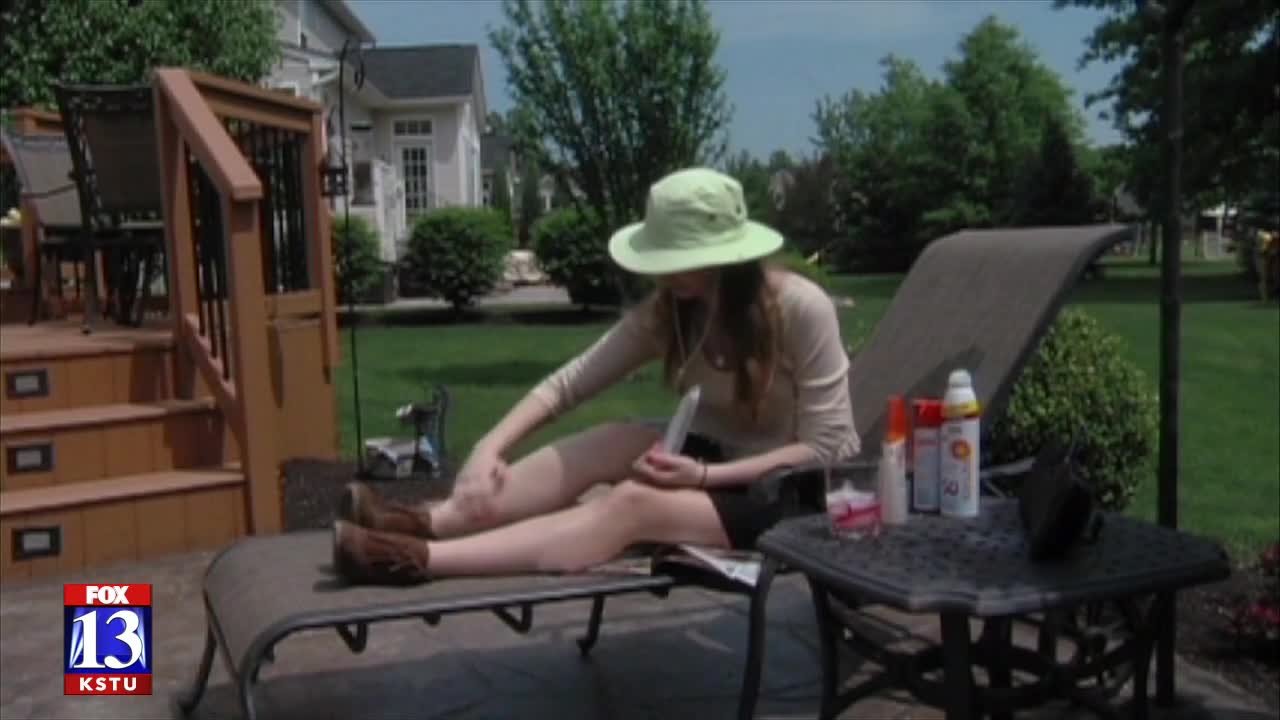Did you know that Utah has the highest incidents of melanoma, which is the most serious type of skin cancer, of any state in the nation?
As people get outside to enjoy the summer temperatures, Intermountain Healthcare medical experts are reminding people to take care of their skin. Sunscreen, sunblock and protective clothing are great ways to avoid burning and skin cancer.
Even during COVID-19, people are finding ways to safely get outside to enjoy fresh air and sunshine. However, skin cancer is a major concern. Skin cancer if the most common form of cancer, according to the American Cancer Society. One in five people will develop skin cancer at some point in their life.
According to Tawnya Bowles, MD, oncology surgeon at Intermountain Medical Center in Murray, and medical director for melanoma services at Intermountain Healthcare, says this is due to our higher elevation and frequent access to outdoor activities. She notes there's an increased risk for all Utahns, including people of color.
"Every day I see the consequences of people not protecting themselves from the sun," said Dr. Bowles. "If people can get into the habit of using sunscreen and protective clothing on a regular basis, we can hopefully decrease the risk of skin cancer."
To reduce the risk of skin cancer Dr. Bowles suggests the following tips:
- Use sunscreen with a minimum of 30 SPF (sun protective factor), at least 15 minutes before going outside and reapply every two hours and after swimming. Sunscreen provides a chemical defense. When applied appropriately it penetrates the skin and absorbs the ultraviolet (UV) rays before they can damage the skin.
- As an even better option, use sunblock. Sunblock offers more protection because it sits on top of the skin. It reflects sunlight off the skin, blocking both harmful UVB and UVA rays. Sunblock typically includes zinc oxide or titanium oxide and used to remain white on the skin after applying, but most modern sunblock goes on clear.
- Use sun protective clothing with a high UPF (ultra-violet protection factor) rating. Clothes with a 50+ UPF rating can block out more than 98 percent of the sun`s harmful rays. Regular clothing like a cotton shirt only has a 7 UPF rating when dry and a 3 UPF rating when wet.
Sun protective clothing is also great because you don`t have to keep reapplying sunscreen to the areas they cover - just don`t forget to apply sunblock or sunscreen to the areas of the body exposed. Sun protective clothing is also a good option for people who may have allergies to certain types of sunscreens or sensitive skin.
Since the primary risk factor for melanoma is exposure to UV radiation, learning how you can protect yourself from UVC radiation can help you reduce your risk of melanoma.
Other Prevention Tips
- Seek the shade, especially between 10 a.m. and 4 p.m., when the sun`s rays are strongest.
- Establish an easy, daily sun protection regimen that you and your children follow.
- Use broad-brimmed hats to protect your ace and UV-blocking sunglasses.
- Do not let your skin burn. On average, a person`s risk for melanoma doubles if he or she has had more than five sunburns. It`s important to take the time and effort to prevent sunburns in the first place.
- Check your skin. Dr. Bowles says it`s important for people to check themselves for changes to moles, bumps, or patches on their skin. These can be the early signs of skin cancer and people should see a dermatologist to further diagnose the issue.
For more information please visit: intermountainhealthcare.org.



